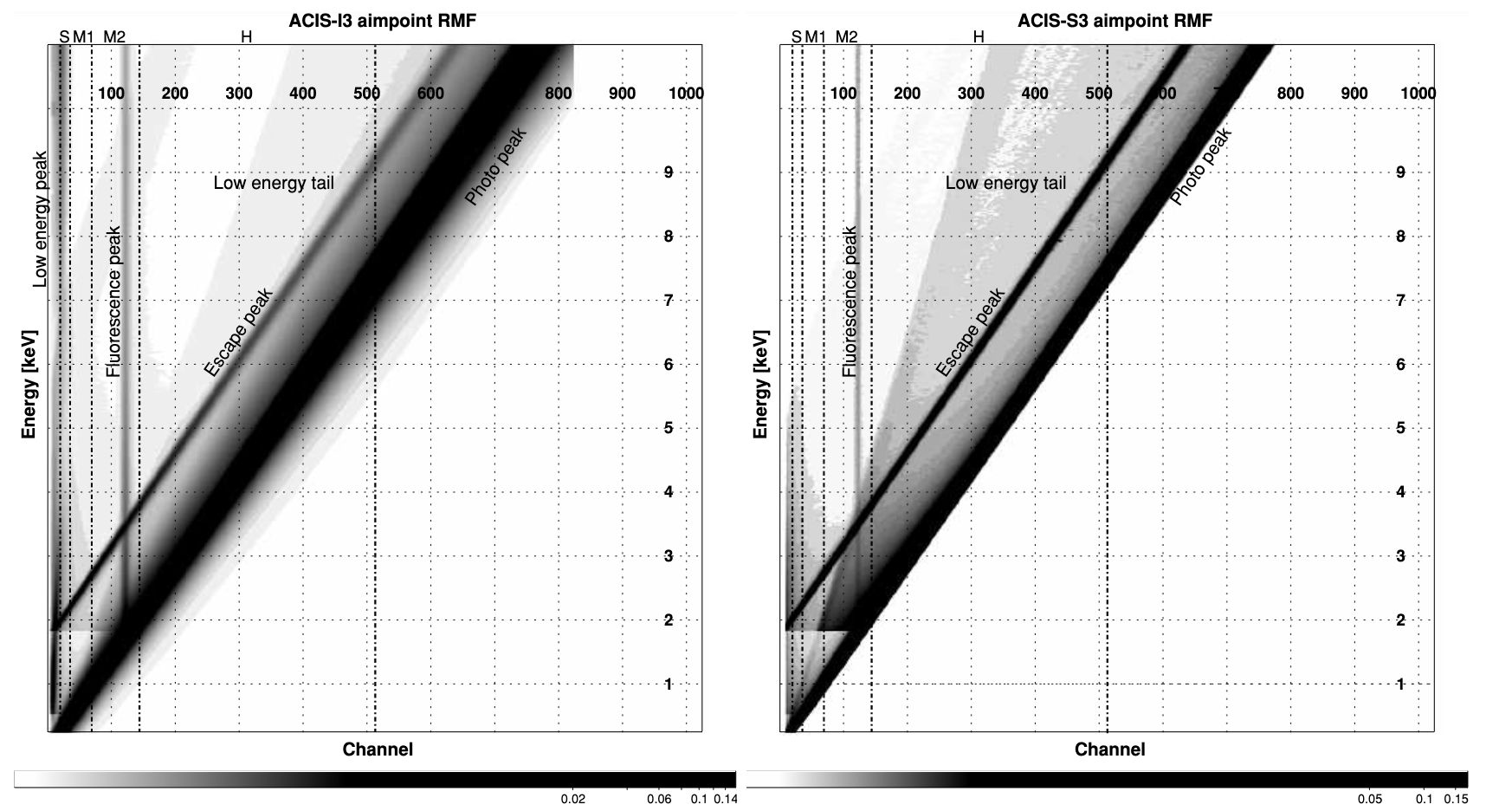How to use RMF?
Some symbols
| Symbol | Shape | Units |
|---|---|---|
| Number of Energy Bins | 1 | |
| Model | photons/s/cm | |
| Effective Area | cm | |
| Photon Luminosity | photons/s | |
| Number of Channels | 1 | |
| Redistribution Matrix File | 1 | |
| Predicted Count Rate | counts/s | |
| Raw Data | counts/s |
The predicted count rate
In reality, the number of channels is fixed, and the number of energy bins is adjustable.
A simple example:
Supposing m=3, n=4, the energy bins are:
[0,0.5] keV, [0.5, 1.0] keV, [1.0, 1.5] keV. the channels are 1, 2, 3, 4.
Model
The unit of
The physical meaning of "20" is there are 20 photons per second per square centimeter in the energy range [0,0.5] keV.
Note that "the number of photons" is different from "counts": "the number of photons" is inferred from the model, and "counts" is the count of each channel.
Effective Area
The unit of
The physical meaning of "4" is the effective area in the energy bin [0.0.5] keV is 4 cm
Redistribution Matrix File
Supposing the redistribution matrix is
There are 3 (m=3) rows and 4 (n=4) columns.
The first row
means that a single photon within the energy bin [0,0.5] keV will have the probability of 0.7, 0.1, 0.1, and 0.1 that cause the count in channel 1, 2, 3, and 4 to increase by 1, respectively.
Namely, if there are many photons, say 1000 photons, within the energy bin [0,0.5] keV, the count of the channel 1, 2, 3, and 4 will be 700, 100, 100, 100, respectively
The second row
means that a single photon within the energy bin [0.5,1.0] keV will have the probability of 0.2, 0.6, 0.1, and 0.1 that cause the count in channel 1, 2, 3, and 4 to increase by 1, respectively.
The third row
means that a single photon within the energy bin [0.5,1.0] keV will have the probability of 0.1, 0.1, 0.7, and 0.1 that cause the count in channel 1, 2, 3, and 4 to increase by 1, respectively.
If the count in channel 2 is increased by 1, there is much more likely to be an incoming photon within the energy bin [0,0.5] keV (probability=0.75) but still can be an incoming photon within the energy bin [0,0.5] keV (probability=0.125) or [1.0,1.5] keV (probability=0.125).
How can we get the spectra?
We can NOT deduce the number of photons in different energy bins from the count of different channels. Since the raw data is the number of counts in different channels, how can we get the number of photons in different energy bins and plot the spectra? The answer is that we just simply attribute the number of counts in different energy bins to the channel that has the highest probability of causing the count in that channel to increase by 1. Namely, if there are 100 counts in channel 2, we attribute all of them to the energy bin [0.5,1.0] keV. We can plot such a spectrum (counts/s/kev versus energy) but we do not fit such a spectrum actually.
How can we fit the model?
Do the Hadamard product of
The Hadamard product of
It is nothing but the element-wise product of
where
The unit of
the unit of which is counts/s. What we are trying to do is to find the best-fit model
